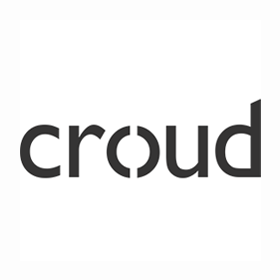We connect you with the best and most reliable agency partners for your projects. All DAN members are thoroughly vetted and ready to deliver exceptional results.

Featured Agencies
Prominent Digital Strategy Companies of New York
-
Together
Together is a full-service agency that build brands, websites and digital products for good tech companies all over.Services- Branding
- Creative
- Digital Product Design
- Digital Strategy
- Mobile App Development
- UX Design
- Web Design
- Web Development
Industries- Education
- Finance
- IT & Technology
- Startup
-
Huemor
We help B2B and ecom brands increase conversions & sales through memorable website design & support.Services- B2B Marketing
- eCommerce
- Marketing Automation
- Web Design
- Web Development
Industries- Fashion & Retail
- Media & Entertainment
Select a service type to discover the best digital marketing agencies!
DAN Member Agencies
Providing Digital Strategy Services in New York
All digital strategy agencies in New York have been vetted and verified against the following criteria:
- Portfolio Quality
- Reliable Services
- Sectoral Expertise
- Team Transparency
If you have any feedback regarding the agencies, please contact us.
-
Engine Digital
HQ: New York+2 cities- Canada
- Toronto
- Vancouver
Gold MemberOne part digital consultancy. One part design and engineering studio. We help our clients grow through new digital products, platforms, and experiences.Industries- Fashion & Retail
- Finance
- Healthcare
- IT & Technology
- Media & Entertainment
- Sports
- Startup
51-200 -
Beyond
HQ: New York+2 cities- USA
- San Francisco
- UK
- London
4.8The rating displayed is a weighted average derived from verified reviews across trusted platforms, further validated by the DAN team for agency authority.Premium MemberBeyond is a design and technology agency helping companies make progress by improving their customer experiences.Industries- IT & Technology
- Education
- Media & Entertainment
- Healthcare
51-200 -
Dune7
HQ: New YorkStandard MemberDune7 is an organic marketing agency powering growth for ambitious travel and technology brands via SEO, content marketing, Digital PR, and brand strategy.Industries- Aviation
- Finance
- Hospitality
- IT & Technology
- Luxury
- Media & Entertainment
- Startup
- Travel & Tourism
2-10 -
Method
HQ: New York+2 cities- USA
- Charlotte
- UK
- London
Gold MemberMethod is a global strategy, design, and software engineering agency that crafts powerful, practical digital experiences.Industries- Automotive
- Energy
- Fashion & Retail
- Food & Beverage
- Healthcare
- Media & Entertainment
201-500 -
MeanPug Digital
HQ: New YorkStandard MemberMeanPug is loyal marketing for ambitious law firms. Branding, SEO, web & software dev, CRM, PR, PPC, traditional media & strategy for law firms.Industries- Media & Entertainment
- Legal
11-50 -
Isadora Agency
HQ: New York+1 city- USA
- Los Angeles
5.0The rating displayed is a weighted average derived from verified reviews across trusted platforms, further validated by the DAN team for agency authority.Gold MemberWeb design company and leader in enterprise digital transformations via branding, UX Design, Product Design, eCommerce, and ongoing web development & management.Industries- Automotive
- Education
- Finance
- Food & Beverage
- Government
- Healthcare
- Hospitality
- Insurance
- IT & Technology
- Media & Entertainment
- Non-Profit Organization
- Real Estate
- Telecommunications
- Travel & Tourism
- Wellness & Fitness
11-50 -
WEBITMD
HQ: Los Angeles+2 cities- USA
- New York
- Australia
- Sydney
4.7The rating displayed is a weighted average derived from verified reviews across trusted platforms, further validated by the DAN team for agency authority.Gold MemberWEBITMD is a digital growth agency providing performance marketing, sales, CRM, and automation campaigns to organizations in order to supercharge their growth.Industries- Aviation
- Education
- Fashion & Retail
- Hospitality
- IT & Technology
- Luxury
- Media & Entertainment
- Real Estate
- Startup
11-50Featured Agency -
Together
HQ: London+2 cities- USA
- New York
- San Francisco
4.9The rating displayed is a weighted average derived from verified reviews across trusted platforms, further validated by the DAN team for agency authority.Gold MemberTogether is a full-service agency that build brands, websites and digital products for good tech companies all over.Industries- Education
- Finance
- IT & Technology
- Startup
11-50Featured Agency -
Distinction
HQ: London+2 cities- USA
- New York
- San Francisco
Gold MemberWe help established service brands improve customer experiences, increase revenue, and modernise technology stacks, enabling them to grow faster with more certainty.Industries- Education
- Finance
- Healthcare
- IT & Technology
- Non-Profit Organization
- Startup
51-2004 Awards
Best Digital Marketing Agencies by Services in New York
Discover the top-notch digital marketing agencies in New York by browsing through wide range of services
- AI Marketing Agencies in New York
- B2B Marketing Agencies in New York
- Branding Agencies in New York
- Content Marketing Agencies in New York
- Creative Agencies in New York
- Digital Marketing Agencies in New York
- Digital PR Agencies in New York
- Digital Product Design Agencies in New York
- eCommerce Agencies in New York
- Email Marketing Agencies in New York
- Inbound Marketing Agencies in New York
- Influencer Marketing Agencies in New York
- Mobile App Development Agencies in New York
- Online Advertising Agencies in New York
- PPC Agencies in New York
- SEO Agencies in New York
- Social Media Marketing Agencies in New York
- Software Development Agencies in New York
- UX Design Agencies in New York
- Video Production Agencies in New York
- Web Design Agencies in New York
- Web Development Agencies in New York
How to Choose Top Digital Strategy Company in New York?
Many companies realize the importance of being in the digital world. Many even want to establish a solid foundation for their online presence by developing a successful digital marketing strategy. Top digital strategy companies in New York provide guidance on which strategies are suitable for companies and in which channels it would be beneficial to be involved. Digital strategy agencies assist companies in determining a variety of marketing strategies.
A digital strategy is a short-term plan created to maximize the commercial success of technology-driven startups. A successful digital strategy emerges when top leaders, and marketing and software development teams work together towards their business goals. We have compiled the benefits of working with the top digital strategy companies in New York for you.
Free Listings
of Digital Strategy Firms in New York
-
CloudControlMedia
Redefines the art of digital marketing science. Our people and platform deliver outstanding results for higher ed averaging 24% increase in enrollments.
HQ: New York -
Cue Studio
Partnering with our clients to create award-winning digital experiences & brands.
HQ: New York -
Transfuture
We’re an award-winning top-rated web design and development partner for startups, B2B, SMB and SaaS enterprise in New York City, NYC, Manhattan, Brooklyn.
HQ: New York -
DIDO Agency
Done-For-You email marketing agency, we take the heavy lifting off your plate, so you can focus on scaling your eCommerce business.
HQ: New York -
Social Link
A full-service marketing and development agency. Social media management, web dev, design, ads, and content generation.
HQ: New York -
Majestyk Apps
Majestyk is a New York-based company that builds technologies to enable the innovation of businesses looking toward the future.
HQ: New York -
Canvas United
While awards excite us, it's helping great brands grow that gets us on the PCH or the A,C,E trains – depending on the coast.
HQ: New York -
Blenderbox
We create human-centered digital experiences for government and mission-driven organizations.
HQ: New York -
Bowen Media
An award-winning, New York-based web design and digital marketing agency that partners with businesses to create powerful, enduring results.
HQ: New York -
Avex Designs
We’re a digital agency building & optimizing eCommerce experiences that bridge the gap between culture & business value.
HQ: New York -
Studio
Create & transform digital products faster. Launch & validate in-market faster. Build with quality. Build with Studio. Studio is an NYC-based digital product strategy.
HQ: New York










































































